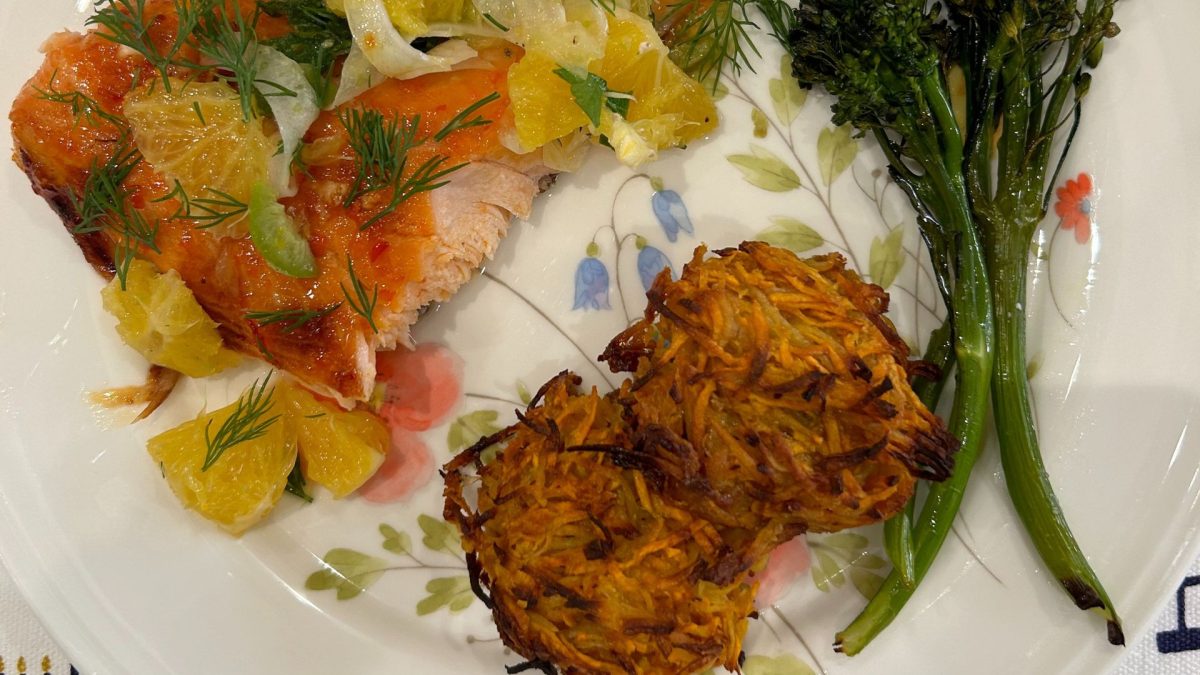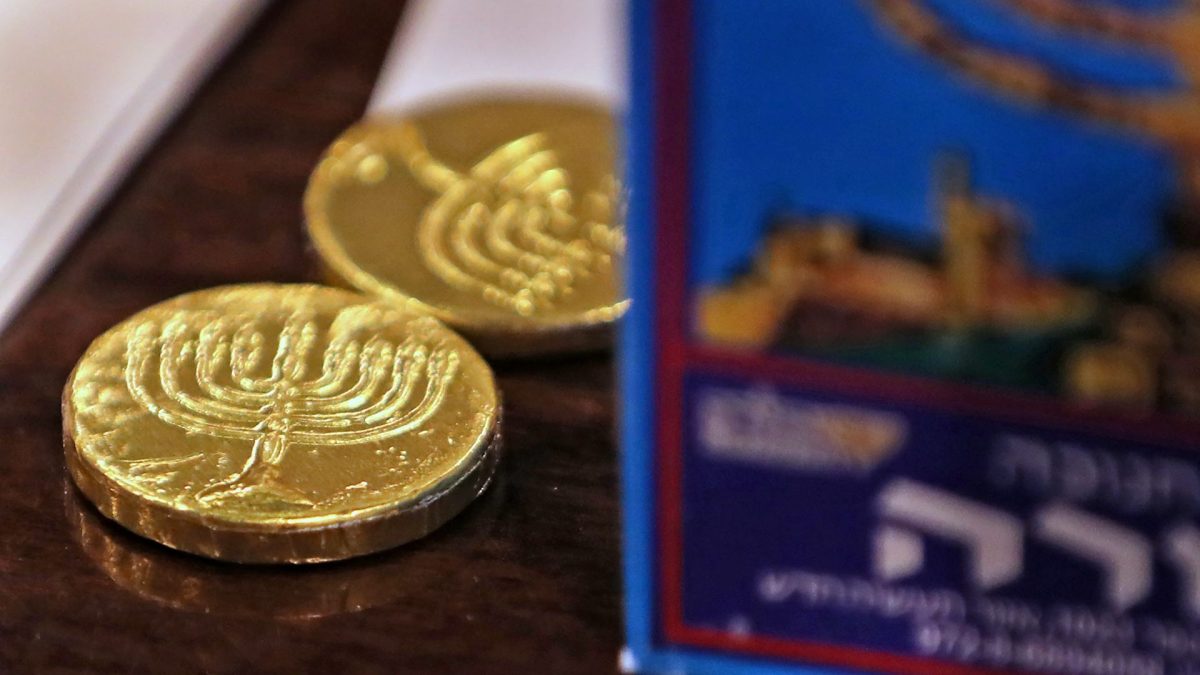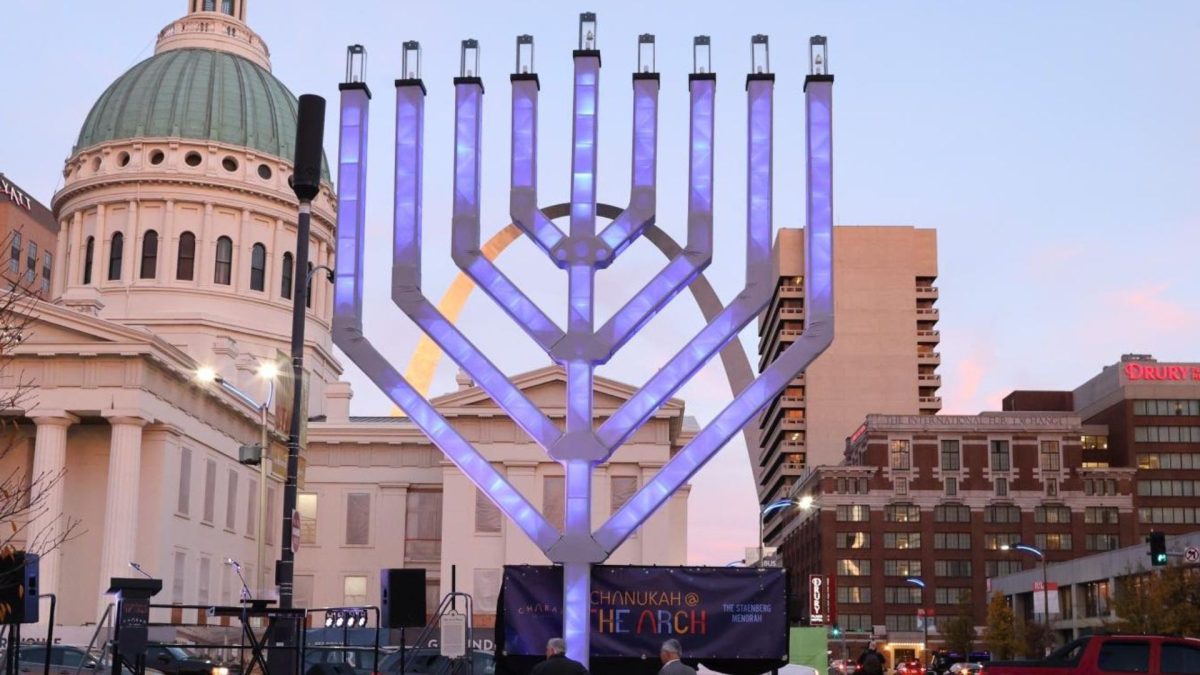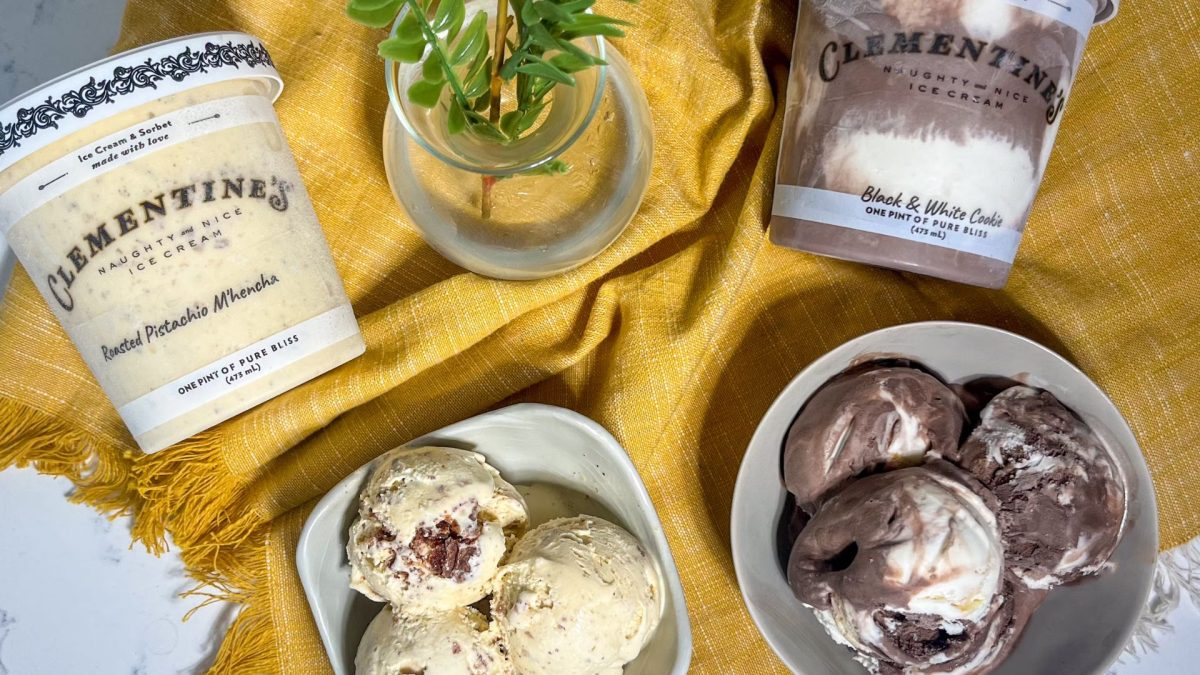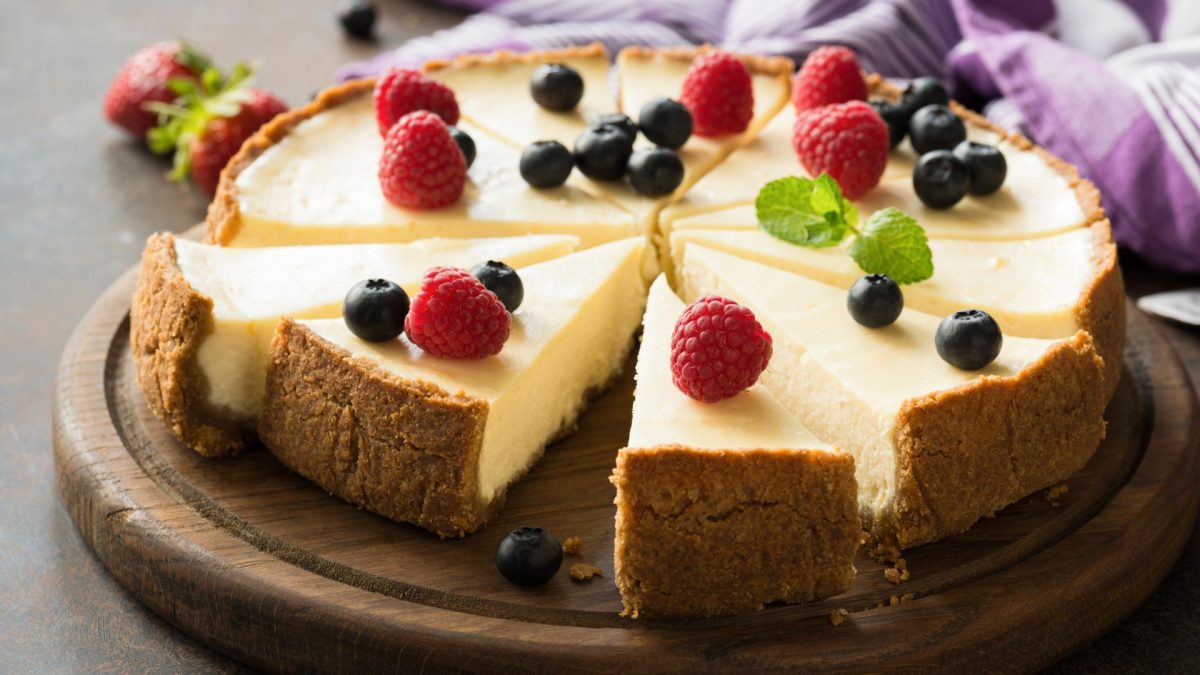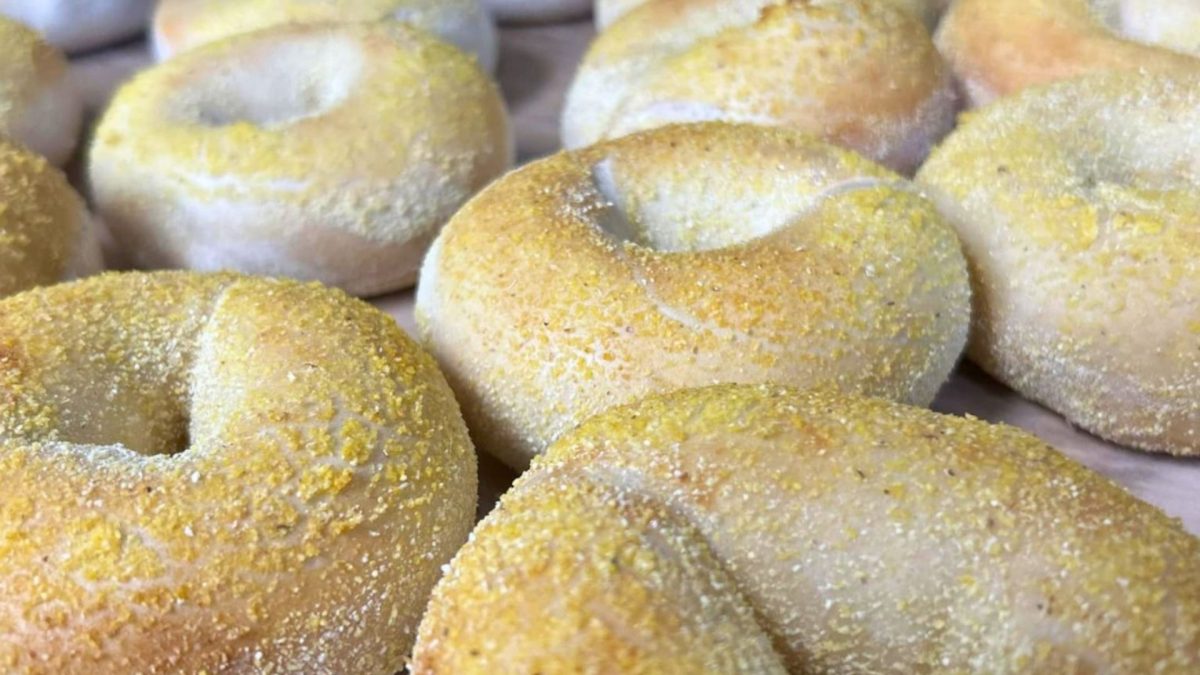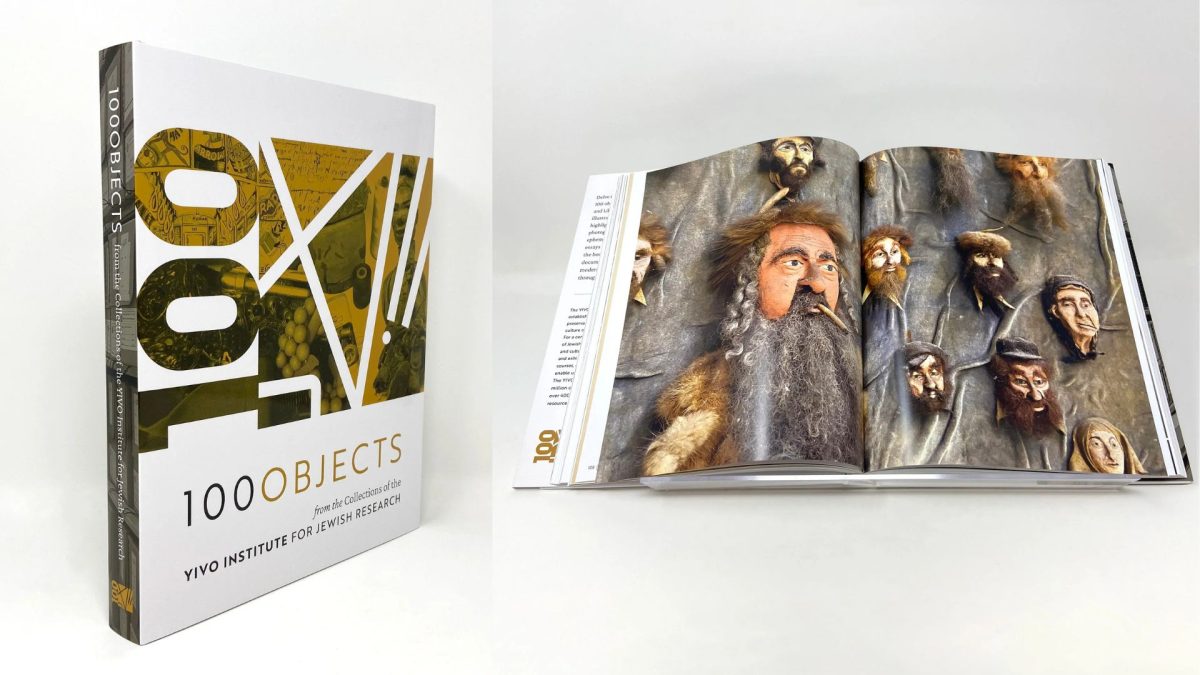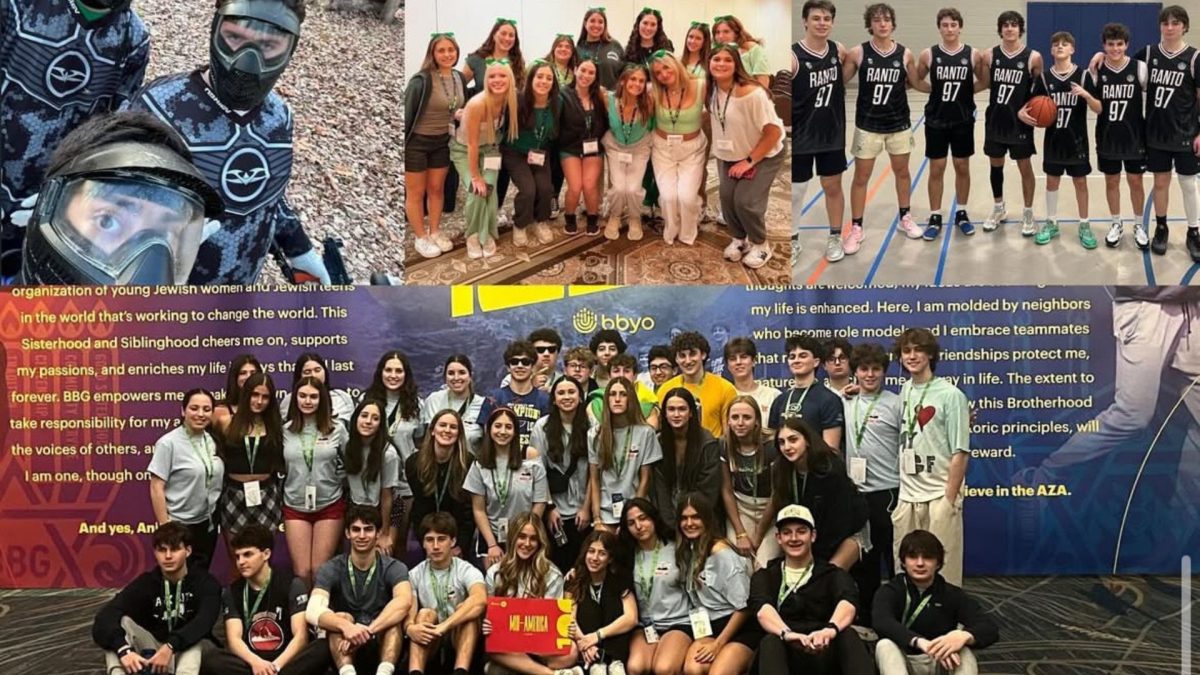Hanukkah celebrates the hard-fought victory of the Maccabees over the Syrian Greek army. Following their victory, the Jews rededicated the Second Temple in Jerusalem — removing idols and statues left by their enemies, cleansing the Temple, building a new altar, and rekindling the menorah. However, they found only one small cruse of uncontaminated oil, enough to burn for one day.
Vayikra (Leviticus), Chapter 24 states that the oil used in the menorah “must be pure,” originating from freshly crushed olives. It would have taken longer than one day, however, to bring back additional “pure” oil. Miraculously, that small cruse of oil burned for eight days, long enough for a new batch to arrive and keep the lights of the menorah burning.
Thus, we celebrate Hanukkah for eight days, kindling one additional candle each night. And, as has been the tradition for centuries, we fry latkes in oil. However, the latke tradition did not always include potatoes or the vegetable oil most Jews use today.
Our Italian ancestors made latkes from ricotta cheese, which are now customary among Sephardic Jews. Called cassola, these latkes may have reflected details of the Story of Judith, in which she seduces her enemies with fresh cheeses as a means to help the Jews attain victory in their war against the Assyrian army. We can surmise that these lightly fried latkes were fried in olive oil since that was, and still is, the predominant oil used throughout the Mediterranean.
When dairy products became scarce and expensive throughout Europe, yeast-risen grain latkes became the custom. These latkes were made with buckwheat or rye flour, water, onions, and eggs and then fried in goose fat.
However, in Europe between 1830 and 1840, when grain prices skyrocketed, our great grandparents pivoted and, out of necessity, chose to make their Hanukkah latkes from potatoes, which were cheap and plentiful. And thus potato latkes, fried in vegetable oil, became an Ashkenazi Hanukkah tradition, brought to America with the wave of European Jewish immigrants in the late 1800s.
So here we are today, still making our latkes from potatoes and frying them in vegetable oil. But what about that extra virgin olive oil which plays such a major role in the story of Hanukkah, and in the significance of olives throughout Judaism?
Olives are one of the seven Species of Israel that are mentioned in the Torah (the others are wheat, barley, grapes, figs, dates and pomegranates). Each species relates to our soul in a unique way. Olives represent foundation, and spiritually they are a symbol of peace. The dove who flew back to Noah’s Ark carried an olive branch to signify that the floods had subsided. The emblem of the state of Israel is a menorah with olive branches on either side. This was also the oil that was used to anoint the high priests and, of course, to light the menorah in the Temple.
Olive oil was also believed to have healing power, which we know today is scientifically proven. Regarded as a “super food,” olive oil has antioxidants known to fight inflammation, improve circulation, boost your immune system, lower fasting blood sugars and insulin resistance with regard to diabetes, and promote healthy skin. In fact, a 2020 study by the American Heart Association found that eating more than a half tablespoon of olive oil a day may lower heart disease risk.
Now let’s go back to that traditional Hanukkah food: potato latkes fried in vegetable oil. Let’s be clear, nothing in the Torah or the Talmud requires us to fry any food on Hanukkah. And if you are tied to tradition, which most of us are, frying your latkes in extra virgin olive oil would be truer to the holiday story.
Furthermore, why not showcase extra virgin olive oil in more than latkes? You might consider a delicious salmon entrée or an olive oil cake. (See my recipes below.) Or make an olive oil salad dressing for a special salad of arugula, sliced apples, sliced fennel, snipped dates, and toasted walnuts. To make the dressing, whisk together 4 tablespoons of your best olive oil, 2 tablespoons balsamic vinegar, 1½ teaspoons honey or date syrup, 1 tablespoon minced fresh shallot, ½ teaspoon Dijon mustard, and salt and fresh ground black pepper, to taste. So delicious and so healthy.
You could even use a premium extra virgin olive oil as a dip for your bread or challah. To add a little extra pizzaz, season the olive oil with some za’atar, the Middle Eastern seasoning made from sumac, thyme, oregano, cumin or coriander, and sesame seeds. Add a dash of salt to the mixture to elevate its flavor.
While you can still lightly fry your latkes in extra virgin olive oil, which has a higher smoking point than other olive oils, baking them is easier, healthier, and makes for an easier clean-up. Be sure, though, to save your best extra virgin olive oils for drizzling or finishing. Two of my favorites are Partanna Sicilian Extra Virgin Olive oil, and Graza “Drizzle” Extra virgin Olive Oil.
Finally, while we tend to look back centuries—or even millenniums—to honor the deep Jewish traditions of olive oil, those traditions live on in surprising ways, including the iconic cartoon character Popeye created by the Jewish artist Elzie Segar in 1929. And who was Popeye’s belove girlfriend? None other than Olive Oyl.
Happy Hanukkah!
Crisp Oven-Baked Latkes
Ingredients:
1 lb. russet potatoes, peeled and quartered
1 ½ lbs. sweet potatoes, peeled and quartered
1 small onion, peeled and quartered
3 large eggs
1 tbsp. extra virgin olive oil, plus extra for muffin pans
½ tbsp. coarse kosher salt
Fresh ground black pepper, to taste
Cooking spray (I use olive oil cooking spray)
Applesauce, sour cream, or Greek yogurt, for topping
DIRECTIONS:
1. Preheat oven to 375 degrees, convection if you have it. Position a rack in the center of the oven. Using a hand grater or the grater disc of a food processor to grate potatoes and onions. Transfer to a large bowl and, using your hands, pick up mounds of the mixture and squeeze over the sink to remove excess moisture. Place back into bowl and set aside.
2. In a small bowl, whisk together eggs, 1 tbsp. extra virgin olive oil, salt and pepper. Add this mixture to bowl of grated potatoes and onion and mix thoroughly with a slotted spoon; set aside.
3. Spray the cups of 2, 12-cup muffin pans with cooking oil. Place 3/4 tbsp. extra virgin olive oil into bottom of each cup. Place muffin pans into pre-heated oven for 5 minutes.
4. Carefully remove 1 of the muffin pans and set it onto a cooling rack. Using the slotted spoon, scoop about 1/2-3/4 c. mixture, and push it against the side of the bowl to squeeze out excess liquid. Fill each of the muffin cups three-quarters full, and lightly spray the tops of each one with some cooking spray. Carefully place back into oven. Repeat with remaining muffin pan. Bake latkes for about 15-18 minutes, or until crisp and golden on top.
5. Place pans on a cooling rack and carefully cut around and under each latke to lift it onto a pan lined with foil paper. (Latkes can be made a few hours in advance.)
6. Just before serving, pop pan of latkes into a 350-degree oven to reheat and re-crisp.
Makes 24 latkes.
Whole Wheat Olive Oil Orange Cake
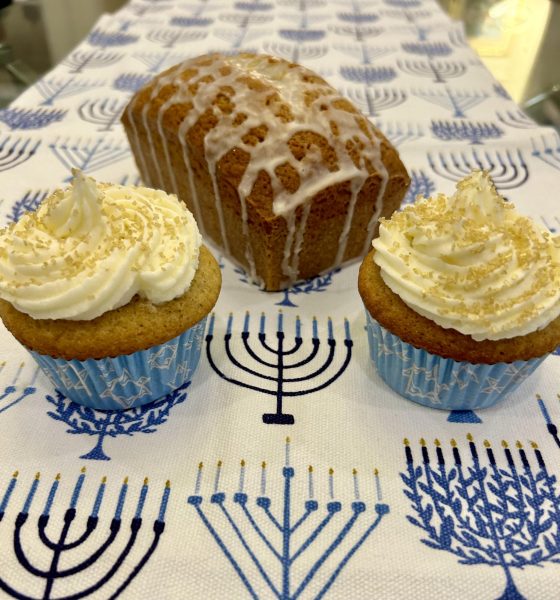
(I used this recipe to make one mini cake which I glazed, and six cupcakes which I iced. Directions for making my icing appears at the end of this recipe.*)
Ingredients:
Cake:
1 c. unbleached all-purpose flour
½ c. whole wheat flour, white or regular
1 c. granulated sugar
½ tsp. baking soda
½ tsp. baking powder
1/4 tsp. coarse kosher salt
2 large eggs
½ c. whole milk
1/4 c. sour cream or whole milk yogurt
½ c. extra virgin olive oil
2 tsp. fresh, finely grated orange zest
Orange glaze:
2 c. powdered sugar
1/4 tsp. vanilla extract
1/4 c. freshly squeezed orange juice
1 tsp. fresh, finely grated orange zest
DIRECTIONS:
Cake:
1. Preheat oven to 325 degrees. Oil and flour a 9x5x3” metal loaf pan.
2. In a large bowl, whisk together both flours, sugar, baking soda, baking powder, and salt; set aside.
3. In a separate medium bowl, whisk together eggs, milk, sour cream or yogurt, olive oil, and orange zest. Pour this mixture over reserved dry ingredients, folding the ingredients together gently until no flour is visible.
4. Pour cake batter into prepared loaf pan and bake for 55-60 minutes, or until a toothpick inserted in the center of the loaf comes out clean.
5. Transfer cake, in pan, to a cooling rack. After 20 minutes, loosen the sides of the cake with a thin sharp knife, and turn cake out onto a cooling rack. Immediately turn cake over so that the top is facing up.
Glaze:
1. Whisk powdered sugar in a small bowl. Mix vanilla extract into orange juice along with the grated zest, and then whisk it all into the powdered sugar until mixture is smooth. Pour glaze over warm cake, letting it drip down the sides. Let cool before slicing.
*To make icing, beat together 8 oz. room temperature cream cheese and 4 tbsp. softened butter in a medium bowl. Add 2 tsp. finely grated orange zest and 2 cups powdered sugar. Mix on low speed until icing comes together. Spread icing onto cupcakes or put it into a pastry bag and pipe it onto the cupcakes. Sprinkle with colored sprinkles (gold or blue, perhaps), if desired. The icing can remain refrigerated for 3-4 days.
Roasted Salmon with Pepper Jelly and Fresh Oranges
(Recipe adapted from “South of Somewhere,” by Dale Gray)
Ingredients:
Salmon:
1 lb. salmon fillet, pin bones removed
1 tbsp. extra virgin olive oil plus 1 tsp., divided
1 tsp. coarse kosher salt
1 tsp. smoked paprika (available in most grocery stores and at Penzey’s)
3 tbsp. apricot preserves or red pepper jelly
2 small garlic cloves, peeled and finely minced
1 tbsp. apple cider vinegar
For garnishing:
2 large navel oranges
12 pitted castelvetrano olives (or kalamata olives) halved (optional)
1/4 c. thinly sliced fennel (optional)
Fresh herbs, such as coarsely chopped parsley, cilantro, dill, mint, and/or chives
Freshly ground black pepper, to taste
4 tsp. extra virgin olive oil
DIRECTIONS:
Salmon:
1. Preheat oven to 350 degrees. Position one rack in the center and one 6-in. from broiler.
2. Line a rimmed baking sheet with aluminum foil. Smear 1 tsp. of olive oil onto foil. Pat salmon dry and lift onto pan, skin-side-down. Drizzle salmon with 1 tbsp. extra virgin olive oil, and sprinkle with salt and smoked paprika.
3. In a small bowl, mix pepper jelly, garlic, and vinegar. Spread mixture evenly over salmon and roast for 12-15 minutes. Turn oven to broil and transfer salmon to higher rack. Broil just until glaze begins to caramelize, about 1-2 minutes.
To garnish and serve:
1. Zest both oranges into a small dish. Place oranges onto a cutting board, stem side up. Using a paring knife, remove peel and pith from oranges and discard. Slice each orange into 6 slices, then into halves quarters; set aside.
2. Slice salmon and place a serving onto each of 4 dinner plates. Top each serving with a pinch of orange zest, a few orange slices/pieces, some of the olives, fennel (if usiing), and then fresh herbs. Grind fresh black pepper over fish, to taste, and drizzle with some extra virgin olive oil; serve.
Makes 4 servings. (Recipe can be doubled.



